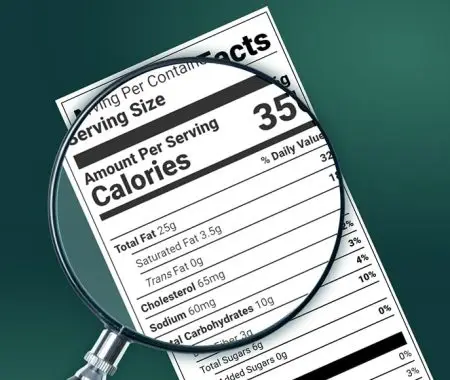Many individuals suffer from severe food allergies, with reactions ranging from mild uncomfortability to aniphalactic shock and even death. In order to curb these reactions and safeguard public health, the Canadian Food Inspection Agency (CFIA) have stated that allergens must be clearly identified on food labels. Clearer and more impactful allergen lists in Canada can allow consumers to see the allergens present in the foods they select off the shelves and decreases their exposure to ingredients that could be harmful to them. CFIA allergen labeling is also part of their broader commitment to providing consumers with the confidence to make safe and informed dietary choices. This article will provide more background to these allergen regulations and best practices for how companies can comply with the CFIA standards for their products.
TLDR
- Regulatory Overview: The Canadian Food Inspection Agency (CFIA) mandates clear allergen labeling on all prepackaged foods to protect individuals with allergies. These regulations are crucial for helping consumers avoid foods that could pose serious health threats.
- Common Allergens: Mandatory labeling includes common allergens such as peanuts, tree nuts, milk, eggs, mustard, shellfish, fish, sesame seeds, soy, wheat, and sulphites. These must be explicitly declared either within the ingredients list or in a “Contains” statement.
- Main Labeling Methods: Allergens are typically identified on food labels in two ways: directly in the ingredients list or through a separate “Contains” statement to enhance visibility and clarity for consumers.
- Cross-Contamination Prevention: Manufacturers are advised to implement strict measures in their production processes to prevent allergen cross-contamination, including dedicated equipment and facilities wherever possible.
- Best Practices for Compliance: Ensuring accurate allergen labeling involves regular staff training, facility audits, and adherence to CFIA’s regulations.
- Consequences of Non-Compliance: Failing to accurately label allergens can lead to serious public health risks, costly recalls, legal penalties, and damage to brand reputation.
- Compliance Tools and Software: Food Label Maker offers features like allergen alerts and customizable label templates that comply with CFIA standards, simplifying the compliance process for businesses.
Overview of Allergen Labeling Regulations
Allergies have become a growing public health issue in Canada, with studies reporting that over 2 million Candadians suffer from at least one food allergy. The CFIA’s allergen labeling regulations are designed to protect individuals with food allergies so that they are not accidentally exposed to harmful substances. These rules state that all potential allergens must be clearly declared on the nutrition labels of prepackaged foods.
Their goal is to enhance transparency and prevent allergic reactions by clearly informing consumers about the allergens that are in their food. This regulatory notion is crucial as it helps individuals with allergies avoid foods that could pose a serious health threat. This enables easier and safer consumption choices across a diverse array of food products, and so that individuals with allergies aren’t limited with the food they choose to have.
See How FoodLabelMaker Can Help You
Common Allergens Required on Labels
Under CFIA guidelines, there is a detailed list of common allergens that must be clearly declared on food labels. These include, but are not limited to:
- Peanuts and Tree Nuts: A source of severe allergic reactions, these must be listed whenever they are present in a food product. Nuts found under this category are almonds, Brazil nuts, cashews, hazelnuts, macadamia nuts, pecans, pine nuts, pistachios and walnuts.
- Milk: A milk allergy should not be confused with a lactose intolerance. The primary difference is that a lactose intolerance causes mild uncomfortability and digestive issues whereas a lactose allergy affects your entire immune system and is much more life-threatening.
- Eggs: Common in many foods, these allergens must also be prominently declared.
- Mustard: As one of the most common spice allergens, mustard needs to be declared on food labels as a prominent allergen.
- Shellfish: Including crustaceans and mollusks like lobster or mussels, these must be identified due to their potential to cause severe allergic reactions. The way to differentiate shellfish from fish is that shellfish don’t have spines or bones.
- Fish: Fish, found in the form of trout, tuna, salmon or sardines to name a few, contain bones or skeletons when consumed. They, like shellfish, can also cause severe allergic reactions for some individuals and should be clearly identified.
- Sesame seeds: While seemingly inconspicuous, sesame seeds can trigger allergic reactions such as anaphylaxis, making it essential to alert consumers who are allergic.
- Soy: Soy is another common allergen that can cause symptoms ranging from mild itching to life-threatening reactions, requiring its presence to be declared.
- Sulphites: Sulphites are normally used as preservatives in various foods and beverages. While it can enhance a product, it can provoke asthma attacks and allergic reactions in susceptible individuals.
- Wheat: Wheat contains a large amount of gluten, which can trigger harmful reactions in people who suffer from celiac disease or gluten intolerances like IBS. Gluten is a protein found in cereal grains like barley, oats, rye, triticale and wheat, and can also cause serious allergic reactions.
The labeling of these allergens is typically carried out in two ways:
- Ingredient Lists: Allergens must be clearly mentioned in the list of ingredients.
- Contains Statements: An additional “Contains” statement placed directly after the ingredient list can also be used to highlight the presence of specific allergens so that it’s easier for consumers to identify them at a glance.
Best Practices for Allergen Management
To reduce the risk of cross-contamination in the manufacturing process, it is crucial for businesses to implement rigorous allergen management strategies, even in their factories. Key practices include:
- Cross-Contamination Prevention: Establishing dedicated areas for allergen-containing products and using separate equipment can help prevent allergens being mixed in to substances they must be separate from.
- Staff Training: Regular training sessions should be conducted to educate employees about allergen management, such as how to handle equipment properly and adhering to safety protocols such as hand-washing and disposing of contaminted PPE.
- Facility Audits: Regular audits should be carried out to ensure that all practices comply with regulatory requirements and that there are no lapses in safety measures.
Consequences of Non-Compliance
Incorrect CFIA allergen labeling can pose significant risks to public health, primarily by endangering customers who have serious food allergies and who rely on accurate labels so that they can avoid life-threatening or harmful reactions.
Non-compliance can also extend beyond public safety and cause serious legal repercussions for your business. This includes product recalls, which are costly and logistically challenging. Additionally, manufacturers may face substantial financial penalties and significant damage to their business reputation, which further impacts consumer trust and long-term profitability.
How Food Label Maker Simplifies Compliance
Food Label Maker is a platform that offers an array of tools and features designed to assist businesses create compliant nutrition facts labels. Their software follows updated regulations as they are released, which is vital when it comes to something as important as CFIA allergen labeling. Their tool even offers allergen alerts that notify users about potential allergens based on the ingredients they put into the software.
Additionally, their customizable label templates ensure that all required information, including specific allergen declarations, is clearly and accurately displayed on product labels. This helps businesses avoid the risks associated with non-compliance and streamlines the Canada allergen list creation process so that customers are informed about what is in their food.
Conclusion
CFIA’s allergen labeling regulations have been implemented so that consumers who suffer from allergies are protected and aware of what allergens are found in everyday food products. This adds to the CFIA’s broader initiative that protects public health through transparent food labels and gives consumers the autonomy to make informed decisions when it comes to their health and diet. Utilizing professional tools like those offered by Food Label Maker can help manufacturers meet these strict standards, which means that they maintain high levels of food safety and protect consumer health.
FAQs:
What are the regulated allergens in Canada?
Canada identifies and requires the declaration of several regulated allergens. These include:
- Peanuts and tree nuts
- Milk
- Eggs
- Soy
- Sesame seeds
- Seafood (fish and shellfish)
- Mustard
- Wheat
- Sulphites
When did Canada’s new food allergen labeling regulations come into force?
Canada’s enhanced food allergen labeling regulations first came into effect as early as February 2011. It introduced regulatory measures such as the “Contains:..” statement, the compulsory listing of any components of an ingredient that are food allergens, gluten sources, or sulphites, and the introduction of mustard as a common allergen, just to name a few. Read through Canada’s News Release for an overview of the enhanced CFIA allergen labeling regulations.
Do all allergens have to be listed on a food label?
Yes, all allergens that are present in a food product, whether as an ingredient or is present due to cross-contamination risks, must be clearly listed on the label in the ingredient list or under the ingredient list after a “Contains…” statement.
When should allergen labeling such as “may contain” be used?
The ‘may contain’ statement should be used when there is a potential for allergen cross-contamination that cannot be completely eliminated through reasonable measures. This usually occurs in the manufacturing process, or if the product is made in a factory that works with allergens in their other products. The statement helps inform consumers of the potential risk of allergen presence.



